Increase Bat Speed And Improve Hitting Power With Tee Drills For Baseball & Softball Youth
Discover how to increase bat speed and improve hitting power with these tee drills for baseball and softball youth players as young as 8 years old.
“Blocking” Like Jose Bautista: A Baseball Hitting Drills For Bat Speed Experiment
Question: Does Landing Bent with the Front Knee & then Straightening it, Add Bat Speed?
Using the Zepp (Labs) Baseball app, I wanted to use the Scientific Method to analyze if “Blocking”, or using Ground Reaction Forces (GRF), produces a significant gain in bat speed.
Background Research
Check out this YouTube video from ZenoLink about “Blocking”, or GRF:
CLICK HERE for a Wikipedia article defining Ground Reaction Forces. Quote from post:
“The use of the word reaction derives from Newton’s third law, which essentially states that if a force, called action, acts upon a body, then an equal and opposite force, called reaction, must act upon another body. The force exerted by the ground is conventionally referred to as the reaction, although, since the distinction between action and reaction is completely arbitrary, the expression ground action would be, in principle, equally acceptable.”
CLICK HERE for another baseball hitting drills for bat speed post I did about Edwin Encarnacion: A How-To “Blocking” Guide.
SCIENCE-BASED TRAINING:
Improve your hitting strategy dramatically by applying human movement principles.
Learn not only how and what to train but also the science behind the methods.
Hypothesis
Based on the above baseball hitting drills for bat speed research and study, I think “Bent Knee Blocking” will produce more bat speed than “Straight Knee Blocking”. For some of you, this may be obvious. But the data comparing the two is quite interesting to see.
Baseball Hitting Drills For Bat Speed Experiment: “Blocking”
Equipment Used:
- Zepp Baseball app
,
- SwingAway MVP Bryce Harper model,
- Two yellow dimple baseballs (feedback markers),
- Flip Video Camera
and Tripod, and
- 33 inch, 30 ounce Pinnacle Bamboo bat.
Setup:
- Yellow dimple ball feedback markers = my bat length, plus two baseballs
- Distance from plate = end of the bat touching inside corner of plate, and knob of bat touching my mid-thigh.
- SwingAway was set slightly behind the front feedback marker, and ball height was about the hip.
- First 101 baseballs were hit with a landing leg angle of about 170-degrees.
- Second 101 baseballs were hit with a landing leg angle of about 146-degrees.
Data Collected (Zepp Baseball App Screenshots):
Data Analysis & Conclusion
- 6-mph average bat speed difference between “Straight Knee Blocking” versus “Bent Knee Blocking”,
- 2-mph average hand speed difference between “Straight Knee Blocking” versus “Bent Knee Blocking”,
- The Average Time to Impact was about the same,
- The average Bat Vertical Angle at Impact had a 6-degree difference, and
- There was only 1-degree of difference between the Attack Angles.
Notes
- I broke my swing into two steps (stopping momentum), to make sure I could accurately isolate the difference in the front knee action.
- The “Bent Knee Blocking” 6-mph average increase is equivalent to 24-48 feet of batted ball distance (depends on the speed of the pitch).
- What was interesting was the huge shift in Bat Vertical Angle at Impact. I suspect it’s because of the higher landing position, and the barrel compensated down to accommodate hitting the sweet spot.
- Looking at the nominal increase in Attack Angle and the wide degree shift in Bat Vertical Angle at Impact, it looks like “Straight Knee Blocking” would lead to more mishits.
- Like in this “Blocking” Experiment, baseball hitting drills for bat speed need to be put to the test. We can’t just feel something will increase bat speed. We must look at what the data says.
In Conclusion
From the Baseball Hitting Drills for Bat Speed Experiment data, we can see that “Bent Knee Blocking” produces more average bat and hand speed than “Straight Knee Blocking”. The other thing that landing with a bent knee does (approx. 146-degrees), is shrink the strike-zone. Or at least create an illusion that it’s shrinking, to the umpire. I call this “Getting Shorter”.
Coupled with forward momentum, the hitter is making a “cut”, much like a wide receiver would on an “L” route. Except instead of the wide receiver changing from the Sagittal (forward/backward) to the Frontal (sideways) Plane of motion, the hitter changes from the Frontal to Transverse (twisting) Plane of motion. And in order to do this, the “plant leg” needs to be bent in order to transfer Ground Reaction Forces efficiently. You’ll NEVER see an NFL wide receiver “cut” with a straight plant leg…they plant bent, then push into the ground to change directions.
- Fix Your Child’s Fear of the Ball Fast: Proven Hitting Drills to Stop Flinching at Pitches—Trusted by Top Youth Baseball Coaches - July 12, 2025
- Fix Your Little Leaguer’s Hitting Slump Fast – Proven Confidence Drills & Mental Reset Tools (Used by Top Youth Baseball Coaches) - July 9, 2025
- Best Hitting Drills for 8-Year-Olds (2025): Fix Swing Flaws Fast with This MLB-Trusted Youth Baseball System—At-Home, Step-by-Step, and Built for Game-Day Confidence - July 5, 2025

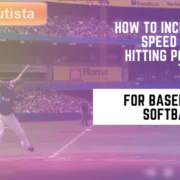

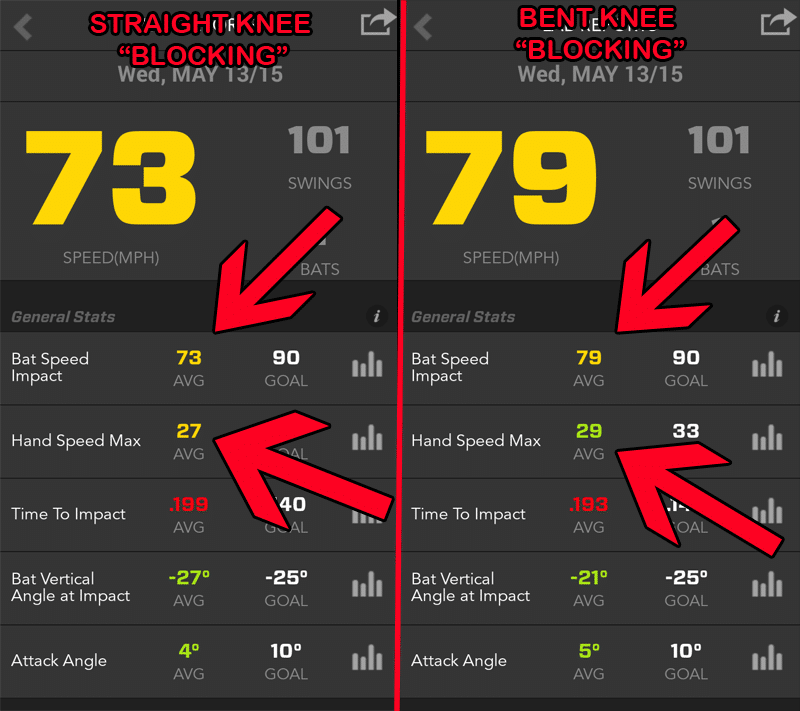
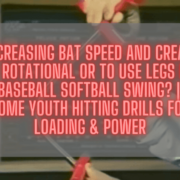

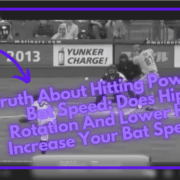


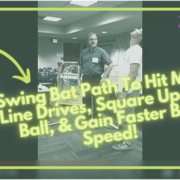

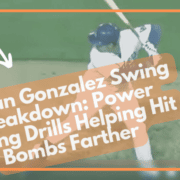



Once again, great study/article, Joey. In order to “straight knee block,” wouldn’t a hitter have to land on his heel or, at least, flat footed? I don’t think a hitter could land on the ball of his front foot and keep his knee straight.
In “bent knee blocking” is it the action of the front knee going back, once the heel drops, that causes the pelvis to rotate?
Good question Joe, most of what I see at the youth level is landing with a straight front knee. One of my readers on Facebook commented that he cues his hitters to land like you’re “testing the ice”. Albeit the hitter is doing this while still committing their body-weight to the front side. I call it “getting shorter”. The hitter should land slightly behind the ball of the foot. The more towards the toes the landing, the more deceleration of the forward momentum. The more towards the heel, the more acceleration of forward momentum. These are the extremes. We must find a happy medium for our hitters. The knee action definitely promotes a more effective hip turn.
Great article… I’m not sure if this works too but as I stride I lag my pelvis/torso and inwardly turn my lead foot before externally turning my lead foot to roughly 65 degrees and when I land the way I see it is I block my foot rotation which pushes my foot/leg linearly away from my knee which helps with rotation than I block my forward (“stride”) with a push against the ground… So would it be safe in this instance there are two blocks… And than the lagging pelvis swings around leaving the rear leg in lag… So two blocks with multiplying limbs in lag… Any thoughts would be appreciated. Thanks.~Djura
Djura, thanks for the comments on the YouTube video too. Coaches go there and read Djura’s comments, and don’t be afraid to jump in: http://gohpl.com/1HHPVkk Great thoughts, so would you say the stride knee at landing actually pushes forward, then circles counter-clockwise (for a righty) to straight? And as the front knee pushes forward the weight ground pressure on the front foot is pushing to the outside part (5th metatarsal)?
Great to see Matt Nokes’ Hitting Solutions Natural Hitter and Pro Timing Project supported by science! Well done!
Matt Nokes is THE MAN! I’m sharing a booth with him at the 2017 ABCA conference in Anaheim 😀